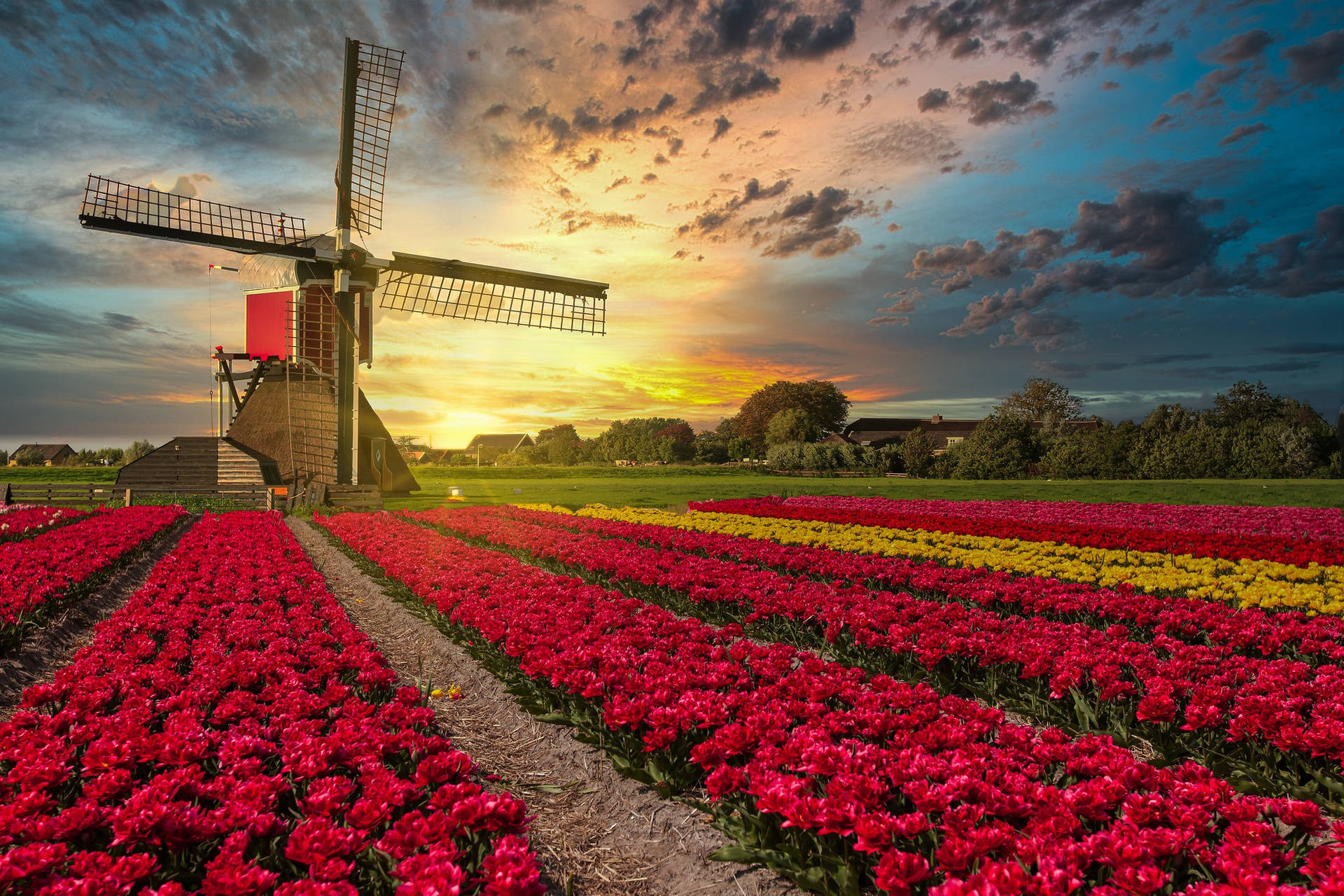Holland Lop Rabbits - Your Guide To These Charming Pets
There's something truly special about having a little furry friend that greets you with a twitch of its nose and a gentle nudge. For many, that special companion turns out to be a rabbit, and among the many wonderful types, one particular kind really stands out. These delightful creatures, with their distinctive floppy ears, bring a great deal of warmth and fun into people's homes, offering a quiet sort of companionship that many folks cherish quite a bit. They are, in a way, like a small, soft cloud of joy that hops around your living space.
We are talking about the Holland Lop, a small rabbit that has, as a matter of fact, captured hearts all over. These little bunnies, known for being very sweet and quite easygoing, are a favorite choice for folks looking for a pet that’s both engaging and manageable. Their appealing looks, combined with a disposition that seems to just melt your worries away, make them a truly popular option. You see, they really do have a way of making a house feel more like a home, too it's almost as if they were made for it.
This article aims to be a helpful guide, covering just about everything you might want to know about the Holland Lop. We'll look at where they came from, what they look like, how to care for them, and what kind of personality you can expect. So, if you're curious about these endearing little animals, or if you already have one and want to learn more, you've come to the right place. We will, of course, try to answer some common questions people have about them, giving you a full picture of what makes these rabbits so special.
Table of Contents
- The Story of the Holland Lop - Where Did They Come From?
- What Makes a Holland Lop Look So Distinctive?
- What Kind of Personality Does a Holland Lop Have?
- How Simple Is It to Care for a Holland Lop?
- What Should You Know About Holland Lop Health?
- Can You Train a Holland Lop?
- Why Are Holland Lops Such Popular Companions?
- A Look at the Life of a Holland Lop
The Story of the Holland Lop - Where Did They Come From?
Every type of animal has a beginning, a tale of how it came to be, and the Holland Lop is no different. This particular kind of rabbit, you see, has roots in a country known for its windmills and tulips: the Netherlands. It's a place where, as a matter of fact, a dedicated individual set out to create something truly unique in the world of rabbits. This small rabbit, which is actually the smallest among all the lop-eared types, began its existence thanks to the efforts of a rabbit enthusiast named Adriann de Cock. He lived in a town called Tilburg, and his work really changed things for rabbit lovers everywhere.
The creation of the Holland Lop was not something that happened overnight; it was, in fact, a careful process that involved bringing together different rabbit types. Adriann de Cock had a vision for a rabbit that was small, had those charming droopy ears, and possessed a gentle disposition. To achieve this, he started by breeding a larger rabbit known as the French Lop. The French Lop is, of course, quite a big rabbit, so you might wonder how it could lead to such a tiny one. Well, he crossed them with smaller, upright-eared rabbits, slowly working to get the size and features he wanted. It was, in some respects, a true labor of love.
Over time, through careful selection and breeding, the distinct characteristics of what we now recognize as the Holland Lop began to appear. This process took a good number of years, with Adriann de Cock refining his lines to ensure the rabbits had the desired compact body, the soft, floppy ears, and that sweet, friendly personality. It's quite interesting to think about how much effort goes into creating a new breed, isn't it? The dedication paid off, because today, this rabbit is loved by many people across different countries, becoming, in a way, a little ambassador for its Dutch origins.
What Makes a Holland Lop Look So Distinctive?
When you first see a Holland Lop, there are a few things that really stand out and make them recognizable. They have a look that is, you know, quite different from many other rabbits. One of the most obvious features, and the one that gives them their name, is their ears. Unlike rabbits whose ears stand straight up, the Holland Lop's ears hang down, resting along the sides of their head. This gives them a particularly endearing appearance, almost like they are wearing a soft, furry bonnet. This ear type is, of course, a defining characteristic of all "lop" breeds, but with the Holland Lop, it's paired with a body that is also quite unique.
The Body Shape of a Holland Lop
These rabbits possess a body structure that is often described as being quite sturdy and well-built for their size. They are, as a matter of fact, dwarf rabbits, meaning they don't grow very large at all. Most Holland Lops will weigh somewhere between two and four pounds, which is roughly one to two kilograms. This makes them, for many people, a very manageable size for a household companion. Their body is not long and slender; instead, it's more on the side of being broad and short, giving them a rather solid or compact look. It’s a bit like a little furry brick, but in the best possible way, you know?
Their overall appearance is, therefore, quite appealing to many. The combination of their relatively large heads, which are in good proportion to their small bodies, and those lovely, droopy ears, gives them a charming and gentle expression. This makes them, quite frankly, very attractive to look at, and it's one of the reasons they are so popular. Their fur is also typically quite soft and dense, adding to their cuddly appeal. So, in some respects, their looks are a big part of their charm, inviting people to get to know them better.
What Kind of Personality Does a Holland Lop Have?
Beyond their charming looks, what truly makes the Holland Lop a favorite among people who keep rabbits is their disposition. These little animals are known for being exceptionally sweet and quite easygoing, which means they tend to adapt well to different home environments. They are, for instance, often described as affectionate, meaning they enjoy interacting with their human companions. They might come up to you for a gentle pet or even just sit near you, showing that they like being in your presence. This kind of friendly nature is, in a way, what makes them such wonderful household members.
They typically have a calm demeanor, which is a great trait for a pet, especially if you're looking for a companion that isn't overly boisterous. While all animals have their individual quirks, Holland Lops generally exhibit a good temperament. They are not usually prone to being overly nervous or aggressive, which makes them quite approachable. This friendly disposition means they can form strong connections with the people they live with, bringing a lot of happiness to a home. It's almost as if they were born to be loved, isn't it?
Are Holland Lops Good for Families?
Given their gentle and friendly nature, Holland Lops often make really good companions for families. Their smaller size means they are not as overwhelming as larger pets, and their calm personality can be a good match for households with children, provided, of course, that the children are taught how to interact with them respectfully and gently. They are, quite simply, known for being friendly, which helps them fit into a family setting. It's important, though, for everyone in the house to understand that rabbits, like all animals, need to be handled with care and respect, and that they are not toys. So, with proper guidance, a Holland Lop can indeed be a delightful addition to a family, offering quiet companionship and plenty of opportunities for gentle interaction.
How Simple Is It to Care for a Holland Lop?
One of the appealing aspects of having a Holland Lop as a pet is that their care is, in a way, relatively straightforward. This doesn't mean they don't need attention, but rather that the basic requirements for keeping them healthy and content are not overly complicated. Like any living creature, they need a safe place to live, the right things to eat, and some regular interaction. Understanding these fundamental needs is the first step to providing a good life for your little bunny. You know, it's about providing a consistent and safe environment for them to thrive.
Feeding Your Holland Lop
Providing the right food is, perhaps, one of the most important parts of keeping a Holland Lop well. Their diet should mainly consist of fresh hay, which should be available to them all the time. Hay is, basically, vital for their digestive system and also helps keep their teeth at a good length. In addition to hay, they need a small amount of good quality rabbit pellets. These pellets provide extra vitamins and minerals that hay alone might not offer. You should also offer them fresh, clean water every single day, perhaps in a heavy ceramic bowl or a sipper bottle. It’s pretty simple, really, but consistency is key.
You can also give your Holland Lop small amounts of fresh vegetables, like leafy greens, but it's important to introduce new foods slowly to avoid upsetting their stomach. Fruits should only be given as a very rare treat because they are high in sugar. So, in some respects, their diet is quite similar to that of other rabbits, focusing on fiber and fresh ingredients. Just remember, a balanced diet is, quite frankly, the foundation of a happy and healthy rabbit, keeping their little bodies working as they should.
Housing for Your Holland Lop
A comfortable and safe living space is, of course, essential for a Holland Lop. Their home, whether it's an indoor enclosure or a rabbit-proofed room, needs to be big enough for them to move around freely, stretch out, and stand up fully. It should also have a solid bottom, not wire, to protect their sensitive feet. You will want to provide a quiet, safe spot where they can rest, like a small box or a hidey-house. This gives them a sense of security, which is pretty important for a small animal. Remember, they need a place where they feel completely safe and sound, too it's almost like their own little sanctuary.
Keeping their living area clean is also very important for their health. This means regular cleaning of their litter box, if they are litter trained, and cleaning the entire enclosure on a regular basis. Fresh bedding should be provided often. They also need time outside of their main living area to explore and exercise in a safe, supervised space. This helps them stay active and happy, preventing boredom. So, while their care is simple, it does require consistent effort to ensure they have a good quality of life.
What Should You Know About Holland Lop Health?
Like all animals, Holland Lops can experience health issues, though with proper care, many common problems can be avoided. Being aware of what a healthy rabbit looks like and noticing any changes in their behavior or appearance is, quite frankly, a big part of keeping them well. They are, after all, small creatures, and sometimes changes can happen quickly. One thing to keep an eye on is their teeth; a rabbit's teeth grow continuously, and if they don't wear down properly through chewing hay, they can become overgrown, causing problems with eating. This is why hay is so very important in their daily food plan.
Digestive health is also a key area to watch. Rabbits have sensitive digestive systems, and changes in diet, stress, or even just a lack of fiber can lead to issues like stasis, where their gut slows down or stops. This can be quite serious. You should, of course, pay attention to their droppings; they should be round and numerous. Any changes, like very small droppings or none at all, should be a signal to seek advice from a veterinarian who understands rabbits. You know, it's about being observant and acting quickly when something seems off.
Regular check-ups with a rabbit-savvy vet are, of course, a good idea to catch any potential problems early. A vet can also offer advice on vaccinations, if needed in your area, and general preventative care. Keeping their living space clean, providing a good diet, and ensuring they have plenty of fresh water are the best ways to support their overall health and well-being. It’s about creating a healthy environment for them, which is, in a way, the best medicine.
Can You Train a Holland Lop?
Many people might not think of rabbits as animals that can be trained, but Holland Lops, with their intelligent and agreeable nature, are actually quite capable of learning. They can, for instance, be litter trained, which makes keeping them as household companions much easier. This usually involves placing a litter box in a corner of their enclosure or in a spot where they naturally choose to relieve themselves, and consistently putting their droppings in the box. With patience and positive reinforcement, most Holland Lops pick this up pretty quickly. It's, basically, about being consistent and rewarding good behavior.
Beyond litter training, some Holland Lops can also learn to respond to their names or even perform simple tricks. They might learn to come when called, or to hop onto your lap. This kind of training is, of course, best done with gentle methods, using treats and praise rather than harsh commands. Rabbits respond well to kindness and a calm approach. You know, it's about building a trusting relationship with them. Spending regular, gentle time with your Holland Lop, talking to them, and offering small rewards will strengthen your connection and make them more receptive to learning. It’s a very rewarding experience to see them respond to your cues, too it's almost like they understand every word you say.
Why Are Holland Lops Such Popular Companions?
The Holland Lop's popularity is not just a passing trend; it's, in fact, a result of a combination of desirable traits that make them truly wonderful companions. They are, for example, consistently ranked among the top five most popular breeds by organizations like the American Rabbit Breeders Association (ARBA). This high standing speaks volumes about their appeal to a wide range of people. Their small size is a big plus for many, as it means they don't require a huge amount of space, making them suitable for apartments or homes where room might be limited. This is, quite frankly, a practical consideration for many potential pet owners.
Beyond their manageable size, their sweet nature and friendly disposition are, of course, major reasons for their widespread appeal. These rabbits are known for being affectionate and enjoying interaction with people. They are not just pretty faces; they actually have personalities that can truly brighten your day. They are, in a way, like a small, quiet friend who is always happy to see you. This combination of a charming appearance, a gentle personality, and relatively simple care requirements makes them an ideal choice for first-time rabbit owners as well as experienced ones. They are, quite simply, a joy to have around.
A Look at the Life of a Holland Lop
Understanding the expected lifespan of a Holland Lop can help you prepare for the commitment of having one as a companion. With proper care, including a good diet, a clean living environment, and regular health checks, a Holland Lop can live for a good number of years. Typically, these rabbits can live anywhere from five to ten years, and sometimes even longer. This means that bringing a Holland Lop into your home is, in a way, a commitment for a significant portion of your life. It's important to consider this long-term responsibility before you decide to welcome one into your family.
Their behavior, as mentioned before, tends to be calm and friendly, but like all animals, they benefit from regular interaction and enrichment. Providing toys for them to chew on, safe spaces to explore, and opportunities for gentle play will keep them mentally stimulated and happy. They are, after all, intelligent creatures that enjoy having things to do. Observing their natural behaviors, like binkying (a happy jump and twist) or flopping over for a nap, is part of the joy of having them around. You know, it's about appreciating their unique little personalities and giving them a life that allows them to express themselves fully.
This guide has aimed to provide a comprehensive look at the Holland Lop rabbit, covering their origins, what they look like, their gentle nature, and the basics of their care. We have also touched on their health needs, their trainability, and why they have become such beloved companions in homes across the United States and the United Kingdom. From their Dutch beginnings with Adriann de Cock to their current status as one of the most popular rabbit breeds, the Holland Lop continues to charm people with its compact size, distinctive lopped ears, and affectionate personality, truly bringing a lot of joy to any home.

Download Netherlands Holland Garden Wallpaper | Wallpapers.com

Netherlands | History, Flag, Population, Languages, Map, & Facts

Holland - WorldAtlas